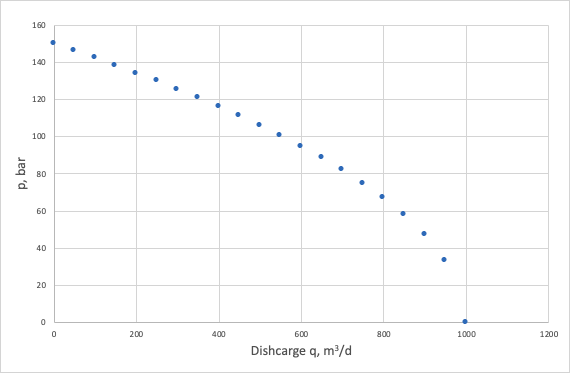The most general Pump model is given as a function of volumetric the mass flowrate of on the intake
| LaTeX Math Inline |
|---|
| body | --uriencoded--p_%7B\rm in%7D |
|---|
|
and discharge pressure
| LaTeX Math Inline |
|---|
| body | --uriencoded--p_%7B\rm out%7D |
|---|
|
:
| LaTeX Math Block |
|---|
|
\dot m = M(p_{\rm out}, p_{\rm in}) |
It's often presented in terms of intake volumetric flowrate:
| LaTeX Math Block |
|---|
|
q = q_{in} = \frac{\dot m}{\rho(p_{in})} = frac{M(p_{\rm out}, p_{\rm in})}{\rho(p_{in})} |
where
| fluid density as a function of fluid pressure |
The electrical power consumption
| LaTeX Math Inline |
|---|
| body | --uriencoded--\displaystyle W = \frac%7BdE%7D%7Bdt%7D |
|---|
|
is given by:
...
In most practical cases the pump model the pump model
| LaTeX Math Block Reference |
|---|
|
depends on the difference between intake and discharge pressure
| LaTeX Math Inline |
|---|
| body | --uriencoded--p_%7B\rm out%7D - p_%7B\rm in%7D |
|---|
|
and
called pump characteristic curve called Pump Characteristic Curve (see
Fig. 1):
| LaTeX Math Block |
|---|
|
q = q(p_{\rm out} - p_{\rm in}) |
|
Fig. 1. Example of Pump Characteristic Curve as function of delta pressure | LaTeX Math Inline |
|---|
| body | --uriencoded--p = p_%7B\rm out%7D-p_%7B\rm in%7D |
|---|
|
. |
A popular pump proxy model is given by the quadratic equation:
...
